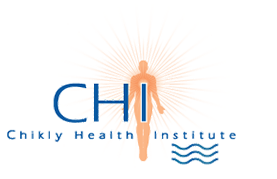Class Hours:
Registration: 8:30 a.m. First day
Class: 9:00 a.m. - 5:00 p.m.
Last Day: 8:00 a.m. - 3:30 p.m.
Times are subject to change.
Class Description:
The Brain Therapy Curriculum is an advanced-level course that takes us to the next realm of manual therapy. It explores the brain, spinal cord, white matter, grey matter, and also in this level brain nuclei such as corpus callosum, septum pellucidum, indusium griseum, fornix, thalamus, globus pallidus, amygdala, hippocampus, brainstem, cerebellum, etc.
The body often aligns itself around these precise structures, and they are frequently unaddressed key/dominant tissue restrictions.
The techniques presented in this Course can probably help most of your patients, but it can specifically help pathologies such as closed-head injuries, whiplash, headaches, dyslexia, cerebral palsy, cognitive behavioral dysfunctions, learning disabilities, ADD/ADHD, Parkinson's and Alzheimer's disease. Students will learn specific techniques to release brain-centered restrictions as well as the damaging effects that these restrictions cause.
Brain 1 is an advanced class that uses a slightly different paradigm by working extensively with the brain parenchyma, grey and white matter, cranial and spinal structures, rather than mainly concentrating on the cranial bones and membranes.
This work requires perceptual skills to be able to address tissue microstructures, and we will have specific exercises in the class to help build up these skills.
This class will propose different ways to release these structures, and once learned, you will understand how these structures are repeatedly one of the most important, and yet least often addressed components of somatic dysfunctions.
Many topics will be covered in the Brain Therapy classes, in general, including:
- 1. Cranial bones (intraosseous and interosseous lesions)
- 2. Cranial membranes in all anatomical directions
- 3. Fluid: 3 distinct compartments
- a. Subarachnoid spaces and cerebral cisterns
- b. Brain parenchyma and the glymphatic system
- c. Ventricles
- 4. Grey Matter: 3 and 6 layered cortex and brain nuclei
- 5. White Matter: 3 types of organization
- 6. Electromagnetic field (EMF) of the brain
- 7. Emotions, as well as mental or spiritual dimensions.
I know that the normal brain lives, thinks, and moves within its own specific membranous articular mechanism." - Sutherland WG, The Cranial Bowl, Free Press, First Edition, 1939, reprint 1994, pp 51.
Attire/Supplies:
Bring comfortable, loose-fitting clothes. Some of these approaches require touching exposed skin. We encourage you to bring a bath towel, lab clothes, and appropriate undergarments to be comfortable.
Short fingernails are required for some techniques.
Due to the potential chemical sensitivities of your classmates, please refrain from wearing perfumes or oils to class.
Please let the institute know if you can bring a treatment table.
Cancellation Policy:
Tuition Transfer: The tuition is fully transferable up to 30 days before the start of the class.
Within 14 days, a $200 administrative fee will apply.
Within seven (7) days, there is no refund of the deposit.
Tuition Refund: Tuition refund requests must be made in writing. Emails are acceptable. Tuition is fully refundable up to 30 days before the start of the class, after which your tuition is non-refundable. In case of an emergency, any requests for a refund later than 30 days before class starts will be considered on a case-by-case basis.
Seats are limited. Reserve today: : 480-999-0808 or [email protected]
For any other inquiries, contact [email protected]
Drury Inn & Suites Phoenix Airport
3333 E. University Drive
Phoenix, AZ 85034
602-437-8400
Drury Inn & Suites Phoenix Airport
3333 E. University Drive
Phoenix, Az 85034
Call or reserve your room online.
602-437-8400
www.druryhotels.com
Group #10134196
Reservation cut-off is March 29th, 2025
Advanced study of anatomy is required.
It is of utmost importance that you prepare for this class as far in advance as possible. Many students feel it is never too early to begin the study of neuroanatomy structures.
This DVD will show you structures such as the ventricular system, the brain parenchyma; the major components (nuclei) of the brain and spinal cord, including the corpus callosum, fornix, thalamus, putamen, globus pallidus, caudate nucleus, amygdaloid bodies, hippocampus, mamillary bodies, red nucleus, substantia nigra, pituitary, hypothalamus, cerebellum, and associated nuclei, cauda equina, conus medullaris, filum terminale.
You will be spending class time reviewing specific areas of the central nervous system. You, therefore, need to pay particular attention to the anatomy (and physiology) of the brain and spinal cord, along with the central nervous system, as you prepare for class.
For this class, it is more important to know the 3-dimensional location of a brain structure and its relationship to the surrounding structures than its classical described physiology.
You should review some books, such as "Netter's Atlas of Human Neuroscience" (see references below).
Terminology
We have provided a list of terms you need to study before attending this course.
It is very important for you to be familiar with the following words and concepts.
Anatomical/Physiological Terms
- All cranial bones, meninges, and associated structures
- Structure and physiology of brain ventricles: frontal horn, temporal horn, occipital horn, central part, interventricular foramen of Monro, optic recess, interthalamic adhesion, aqueduct of Sylvius, foramen of Luschka, foramen of Magendie, choroid plexus of lateral, third, and fourth ventricles, and central canal of the spinal cord
- Major structures of the brain, including corpus callosum, septum pellucidum, indusium griseum, fornix, thalamus, pulvinar, interthalamic adhesion, putamen, nucleus accumbens, globus pallidus, lentiform nucleus, caudate nucleus, basal ganglia, internal capsule, external capsule, claustrum, limbic system, amygdala, hippocampus, mamillary bodies, brain stem, hindbrain, medulla oblongata, pons, diencephalon, mesencephalon, cerebellum and associated nuclei (fastigial, globose, emboliform, dentate), red nucleus, substantia nigra, pituitary (hypophysis), hypothalamus and its numerous nuclei, pineal(epiphysis), locus ceruleus, colliculus, and geniculate bodies.
- Astrocytes, oligodendrocytes, microglia, ependyma, organelles, cell membrane, cytoplasm, nucleus, centriole (centrosome/basal bodies), Golgi apparatus or Golgi complex, ribosome (ribonucleoprotein), Endoplasmic reticulum (ER), mitochondria, granule/vesicle/vacuole, microfilaments (actin filaments), intermediate Filaments, microtubules, extracellular matrix (ground substance) (You can use "Silent Waves" Part 6, Chapter 3 as a reference for this topic).
Pathologies
Be sure you are familiar with the following pathologies: closed-head injuries, whiplash, dyslexia, cerebral palsy, cognitive behavioral dysfunctions, learning disabilities, ADD/ADHD, Alzheimer's, and Parkinson's.
List of words from Netter's Atlas of Human Neuroscience
Be familiar with the brain structures from each of the following pages of “Netter's Atlas of Human Neuroscience” First Edition, (2nd edition in parenthesis), [3rd edition in brackets]:
Page 7 (pages 6-7) [page 7-11]: The different cells of the CNS: Astrocyte, oligodendrocyte, microglia, ependyma, [glial]
Page 23 (page 34), [page 52]: Insula
Page 25 (pages 37-38), [page 55-56]: Corpus callosum: genu, body, splenium; cingulate gyrus, pituitary, interthalamic adhesion, pineal, cerebellum, medulla oblongata
Page 27 (page 40), [page 58]: Olfactory bulb, pituitary, mammillary bodies, red nucleus, substantia nigra, splenium of the corpus callosum
Page 29 (page 46), [page 64]: Ventricles, thalamus, putamen, globus pallidus, lentiform nucleus, caudate nucleus, external and internal, capsule, claustrum, insula
Page 30 (page 47), [page 65]: Corpus callosum, indusium griseum
Page 31 (page 48), [page 66]: Corpus callosum, medial and lateral longitudinal striae
Page 32 (page 50), [page 68]: Corpus callosum, mamillary bodies, fornix, columns and commissure of fornix, hippocampus, thalamus, putamen, globus pallidus, caudate nucleus, amygdale
Page 33 (page 51), [page 69], [page ]: Corpus callosum, fornix, hippocampus, pineal gland
Page 34 (page 52), [page 70]: Thalamus, interthalamic adhesion, mediodorsal nuclei (MD)
Page 36 (page 56), [page 74]: Cerebellum, cerebellar nuclei: fastigial, globose, emboliform, dentate
Page 43 (page 68), [page 86]: Ventricular system: frontal horn, temporal horn, occipital horn, central part, interventricular foramen of Monro, optic recess, interthalamic adhesion, aqueduct of Sylvius, third and fourth ventricles, lateral recess, foramen of Magendie, foramen of Luschka, choroid plexus of lateral, third and fourth ventricles
Page 44 (page 70), [page 88]: Cerebellum, thalamus, pituitary, pineal
Page 45 (page 73), [page 91]: CSF and ventricular system
Page 77 (page 128), [page 149]: Foramen of Monro, aperture of Luschka and Magendie
Page 177-178 (page 261-263), [page 291-293]: Hypothalamus
Page 190 (page 288), [page 318]: Nucleus accumbens
Page 191 (page 290,417), [page 320,455]: Amygdala
Page 208 (page 318,382-383), [page 349,416-417]: Substantia nigra
Page 258 (page 257,380), [page 287,414]: Cerebellar nuclei: fastigial, globose, emboliform, dentate
Page 265-269 (page 262,390-394), [page 292,424-428]: Hypothalamus
Page 282 (page 404-405,407), [page 438-440,442]: Anterior, preoptic, and posterior nuclei of the hypothalamus
If you use the 4th edition of "Netter's Atlas of Human Anatomy," you should specifically review plates 102-127 (formerly 96-121) and 160-170 (formerly 153-162).
If Needed, Other in-Depth Resources
- "Atlas of Anatomy," Thieme, Head and Neuroanatomy, ISBN: 978-1-58890-441-6
- "Color Atlas of Human Anatomy, Vol. 3, Nervous System and Sensory Organs", Thieme, ISBN: 978-1-58890-0647
- "Neuroanatomy, 3-D Stereoscopic Atlas", M. Hirsch, T. Kramer, Springer Ed, ISBN: 3-540-65998-6
- "The Human Brain", John Nolte, Mosby, ISBN: 978-0-323-01320-8
- "Neuroanatomy, Text and Atlas", John Martin, Appleton & Lange Ed ISBN: 0-8385-6694-4
If you need a plastic brain model to help you assimilate these anatomical structures, Dr. Chikly recommends a 15-part, life-size model that is made of SOMSO Plast.






